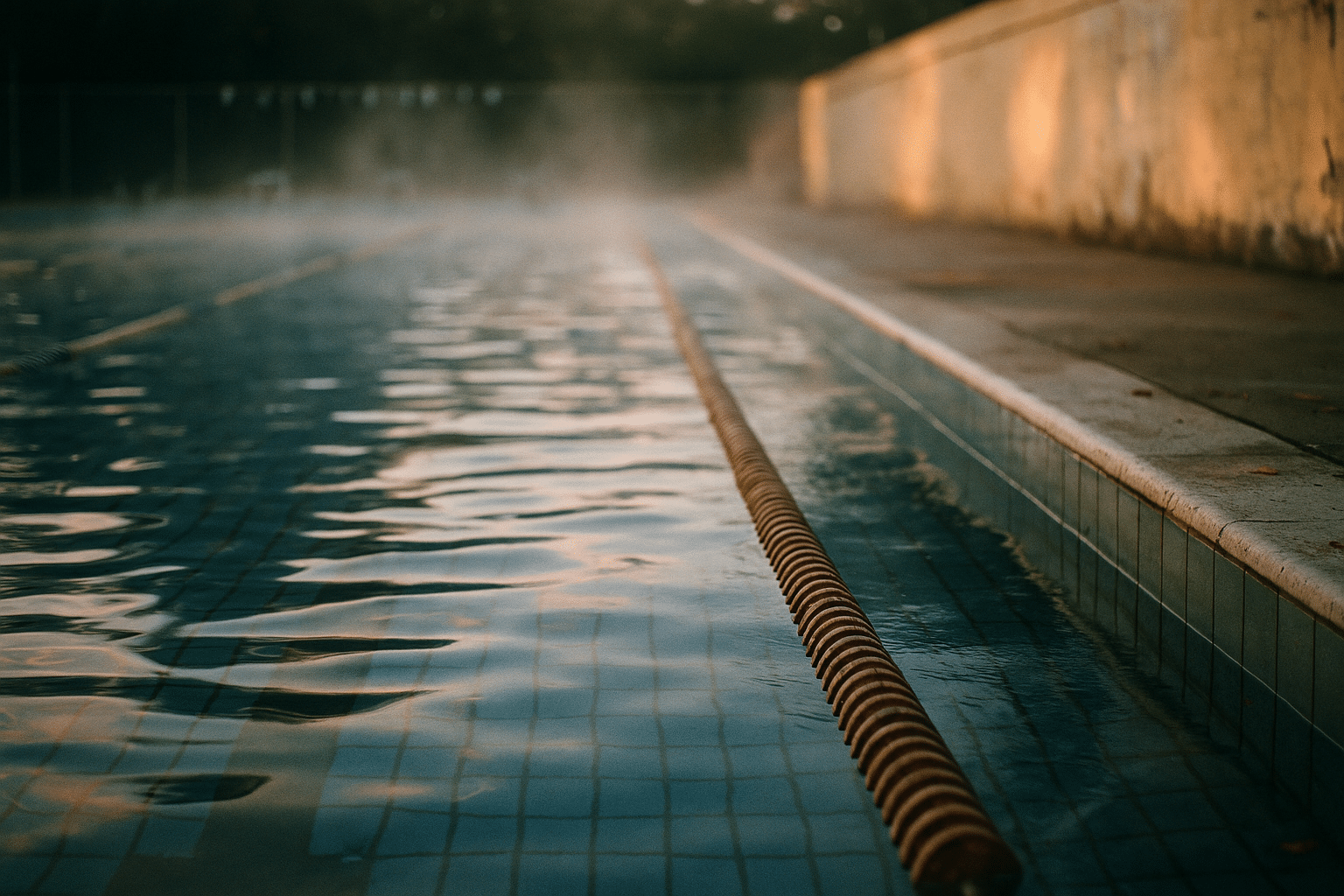
Explore the world of swimming
Introduction
Swimming sits at the crossroads of fitness, skill, and serenity. It is a low-impact, full-body activity that supports cardiovascular health, mobility, and mental well-being, while also opening the door to a lifelong skill with practical safety benefits. Whether you are stepping into the shallow end for the first time or refining a personal record, the water offers a uniquely adaptable environment: it lightens the load on joints, provides uniform resistance for muscles, and delivers a calming sensory experience that many find restorative.
This article maps the journey from foundational understanding to confident practice. You will find insights on health advantages, stroke mechanics, training structure, safety principles, and a practical conclusion that ties it all together. From the quiet rhythm of a solo lap to the energy of a group set, swimming is both art and science—an activity you can mold around your goals, schedule, and setting.
Outline
– Health and Wellbeing Benefits of Swimming
– Stroke Mechanics: How to Move Efficiently
– Training Plans and Smart Progress
– Safety, Accessibility, and Inclusivity
– From First Lap to Lifelong Habit: A Practical Conclusion
Health and Wellbeing Benefits of Swimming
Swimming is often described as a “whole-body” modality, and for good reason. The water supports much of a swimmer’s body weight—immersion to the neck can reduce effective load on joints by up to roughly 90%. That buoyancy helps people move with less pain or impact than many land-based sports, making swimming a strong option for those managing joint sensitivity, returning from certain injuries (with professional guidance), or simply seeking variety without additional strain.
Cardiovascular gains are substantial. Regular sessions can improve aerobic capacity, enhance circulation, and support healthy blood pressure. In terms of energy expenditure, a typical adult may expend approximately 400–700 kilocalories per hour at moderate to vigorous efforts, though actual values vary by stroke, technique, and intensity. The water’s uniform resistance encourages balanced muscle engagement: shoulders and lats drive propulsion; core muscles help stabilize rotation and alignment; legs contribute rhythm and speed; and smaller stabilizers coordinate movement. Compared with some land activities, this multi-directional resistance can smooth out imbalances, fostering more symmetrical strength over time.
Mental well-being benefits are noteworthy. Rhythmic breathing, steady pacing, and the muffled sensory environment can reduce perceived stress and promote focus. Many swimmers report improved sleep quality and mood when they maintain a consistent routine. For individuals who find high-impact exercise uncomfortable, swimming can deliver a satisfying, sweat-worthy challenge without the pounding sensation associated with running or plyometrics.
Practical advantages extend beyond fitness. Water competence—comfort with floating, treading, and basic propulsion—can add real-world safety value for you and your family. It also broadens recreational horizons, from snorkeling and paddling to open-water swims and community events. With thoughtful progression, swimming can be as gentle or as demanding as you need it to be.
Key takeaways at a glance:
– Low-impact yet comprehensive: joint-friendly conditioning for heart, lungs, and muscles.
– Adaptable intensity: easy recovery sessions and challenging intervals are equally accessible.
– Mental refresh: rhythmic movement and controlled breathing support focus and calm.
– Lifelong relevance: water skills enhance safety and expand recreational options.
Stroke Mechanics: How to Move Efficiently
Efficient swimming begins with body position. Aim for a long, horizontal profile with a neutral head and relaxed neck. Think “press the chest, lift the hips,” allowing the legs to trail without dropping. Exhale continuously into the water to prevent breath-holding and unnecessary tension; inhale smoothly when the mouth clears the surface. Streamlining—reducing drag—is step one in getting faster without working harder.
Freestyle (front crawl) is the most widely used stroke for fitness and distance. Key elements include:
– Rotation: Roll from side to side as a single unit from shoulders to hips, enabling a stronger catch and longer reach.
– The catch: Initiate each pull with a high elbow, forearm angled to “grip” the water. Imagine anchoring the hand and moving the body past it.
– Breathing: Try bilateral breathing (alternating sides) during easy work to balance mechanics; during harder efforts, breathe as needed without disrupting timing.
Common issues: crossing the midline during entry (causing snaking), lifting the head to breathe (hips drop), and overkicking (wasting energy). Correctives include fingertip-drag drills for relaxed recovery, “catch-up” drills to coordinate timing, and short sets focusing on slower, deliberate strokes to feel the water.
Backstroke offers a posture-friendly complement to freestyle. With eyes up and hips high, think of a patient, straight-arm recovery and a strong underwater catch. Keep a steady flutter kick, and avoid over-rotating the head. Backstroke can relieve shoulder stress when technique is sound, and it trains body awareness without relying on visual cues from the bottom.
Breaststroke emphasizes timing and glide. Press the chest slightly forward as you kick, streamline between strokes, and let the recovery be narrow to reduce drag. It is generally slower but remains popular for its rhythm and breath control. Butterfly, by contrast, demands coordinated power: a fluid undulation from chest to hips, two kicks per stroke cycle, and a well-timed breath that does not lift the head excessively.
Two practical metrics guide efficiency:
– Distance per stroke (DPS): How far you travel each stroke. Improving DPS usually means better body position and catch.
– Stroke rate (tempo): How quickly you turn the arms. Skilled swimmers balance DPS and rate to match distance and goals.
Simple tools—a snorkel for head-neutral alignment, a pull buoy for body position, or short fins for kick rhythm—can provide useful feedback. The aim is not more effort, but smarter water feel: finding that quiet, streamlined path where speed comes from finesse as much as force.
Training Plans and Smart Progress
A thoughtful session has three parts: warm-up, main set, and cool-down. Start with easy swimming and mobility to increase blood flow and rehearsal of technique. The main set targets your focus for the day—endurance, speed, threshold pacing, or skills. Finish with gentle swimming and drills to consolidate learning and promote recovery.
Intensity can be guided by a simple rate of perceived exertion (RPE) scale from 1 to 10:
– RPE 2–3: Very easy, technique-focused.
– RPE 4–6: Steady aerobic work; you can speak in short phrases.
– RPE 7–8: Strong threshold efforts; speaking becomes difficult.
– RPE 9–10: Near-maximal sprints; short bursts with longer rest.
Many swimmers also use a personal “critical pace” or threshold time established from short time trials. Sets anchored to this pace help standardize effort across sessions and track progress as times improve.
Sample beginner session (approx. 900–1200 m or yards, adjust as needed):
– Warm-up: 6 x 50 easy with 15–20 seconds rest, alternating swim and kick.
– Skills: 4 x 25 drill (e.g., catch-up, fingertip drag), easy swim back.
– Main: 8 x 50 at steady RPE 5–6, 20 seconds rest. Focus on smooth breathing and consistent stroke count.
– Cool-down: 4 x 25 easy choice.
Sample intermediate session (approx. 1800–2400):
– Warm-up: 300 easy + 4 x 50 build effort.
– Skills: 4 x 50 pull with buoy, moderate, counting strokes.
– Main: 3 x (4 x 100) at threshold pace, 15–20 seconds rest; 100 easy between rounds.
– Finisher: 8 x 25 fast with generous rest, focusing on form under speed.
Open-water skills set (pool-based, adaptable):
– Warm-up: 200 easy.
– Sighting practice: 8 x 50 with 2–3 forward “sights” per length, steady effort.
– Pace change: 6 x 100 alternating 25 hard/75 steady, short rest.
– Drafting simulation: If permitted and safe, short repeats swimming side-by-side at controlled effort.
Progress tracking is straightforward:
– Time trials: A monthly 400 or 1000 can benchmark aerobic fitness.
– Stroke count: Revisit a standard easy pace and note strokes per length; gradual reductions suggest better efficiency.
– Repeat consistency: Sets like 10 x 100 on a fixed interval reveal pacing control and fatigue resistance.
– Recovery markers: Morning energy, soreness, and motivation are practical indicators of adaptation.
Strength and mobility complement pool work. Emphasize shoulder rotator-cuff stability, scapular control, hip extension, and trunk rotation. Two short sessions per week can enhance durability and water feel. Recovery habits—hydration, balanced meals with sufficient protein and carbohydrates, and adequate sleep—help sustain steady progress without overreaching.
Safety, Accessibility, and Inclusivity
Water is inviting, but safety deserves constant attention. Foundational rules are simple: do not swim alone, choose lifeguarded areas when possible, and match the environment to your skill. In pools, observe posted depth markings and lane etiquette. In open water, check weather, currents, temperature, and water quality before entering. High-visibility gear and a bright cap can improve your profile; in low-light conditions, reconsider or choose a safer time.
Cold water requires special care. Sudden immersion can trigger cold-water shock, elevating heart rate and breathing; enter gradually and allow time to acclimate. Thermal protection—such as an appropriate wetsuit, gloves, or booties—can extend comfort and safety in cooler conditions. Conversely, warm, sunny days call for shade breaks, hydration, and skin protection. Reapply water-resistant sunscreen as directed, and consider protective clothing to limit exposure.
If you encounter a rip current near a beach, remain calm and conserve energy. Floating to maintain breathing control is priority one. Swim parallel to the shore to exit the current, then angle back in once the pull subsides. When in doubt, wave and call for assistance. In lakes or reservoirs, avoid areas with boat traffic, steer clear of algal blooms or murky runoff, and respect posted advisories.
Inclusive access strengthens communities. Many facilities offer learn-to-swim classes for children and adults, including adaptive programs with equipment such as flotation aids or modified entry systems. Public pools and community centers can provide lower-cost options; scholarships or off-peak pricing may be available. For parents and caregivers, create layers of protection: active supervision within arm’s reach for weaker swimmers, pool barriers and self-latching gates at home, and life jackets in open water or on boats. Encourage water competence: floating, rolling to the back, and basic propulsion.
Practical safety checklist:
– Choose environments that match your ability and weather conditions.
– Never swim alone; share your plan and expected return time.
– Acclimate to cold water gradually and monitor for numbness or shivering.
– Prioritize visibility and consider a tow float in open water.
– Respect fatigue; exit before technique deteriorates.
– Keep ears dry after sessions if prone to irritation, and shower pre- and post-swim for hygiene.
Thoughtful habits ensure swimming remains a lifetime activity—rewarding, social when you want it to be, and welcoming for diverse ages and abilities.
From First Lap to Lifelong Habit: A Practical Conclusion
Your path in the water is personal, but a few principles apply broadly. Start with consistency over intensity—two or three sessions each week, even if short, will teach your body and mind to move comfortably. Embrace patient technique work: a smoother catch, better alignment, and quieter kick will pay dividends across every distance and goal. Track progress with simple benchmarks, and celebrate small wins, like holding a steadier pace or reducing strokes per length.
For new swimmers, focus on comfort, breathing rhythm, and basic water skills before chasing speed. For fitness seekers, a balanced mix of steady aerobic sets and shorter threshold intervals can build robust endurance without monotony. For time-pressed professionals or parents, 30–40 minutes of structured intervals can deliver meaningful gains if you slip into the pool with a plan. Masters and open-water enthusiasts can layer in sighting practice, pace changes, and longer continuous swims to build confidence outside the lane lines.
Community elevates the experience. Training partners, clubs, or classes can add accountability and a sense of shared momentum. If you prefer solitude, let the water be an hour of moving meditation; set a theme for each session and exit feeling restored rather than depleted. Whichever path you choose, keep safety in view, respect the environment, and maintain good pool etiquette so everyone enjoys the space.
Above all, remember this: swimming rewards patience and curiosity. It is both skill and fitness, puzzle and playground. Begin where you are, with the water you have, and let steady practice transform effort into ease. One lap becomes two, then a set, then a habit that supports your health, confidence, and joy for years to come.


